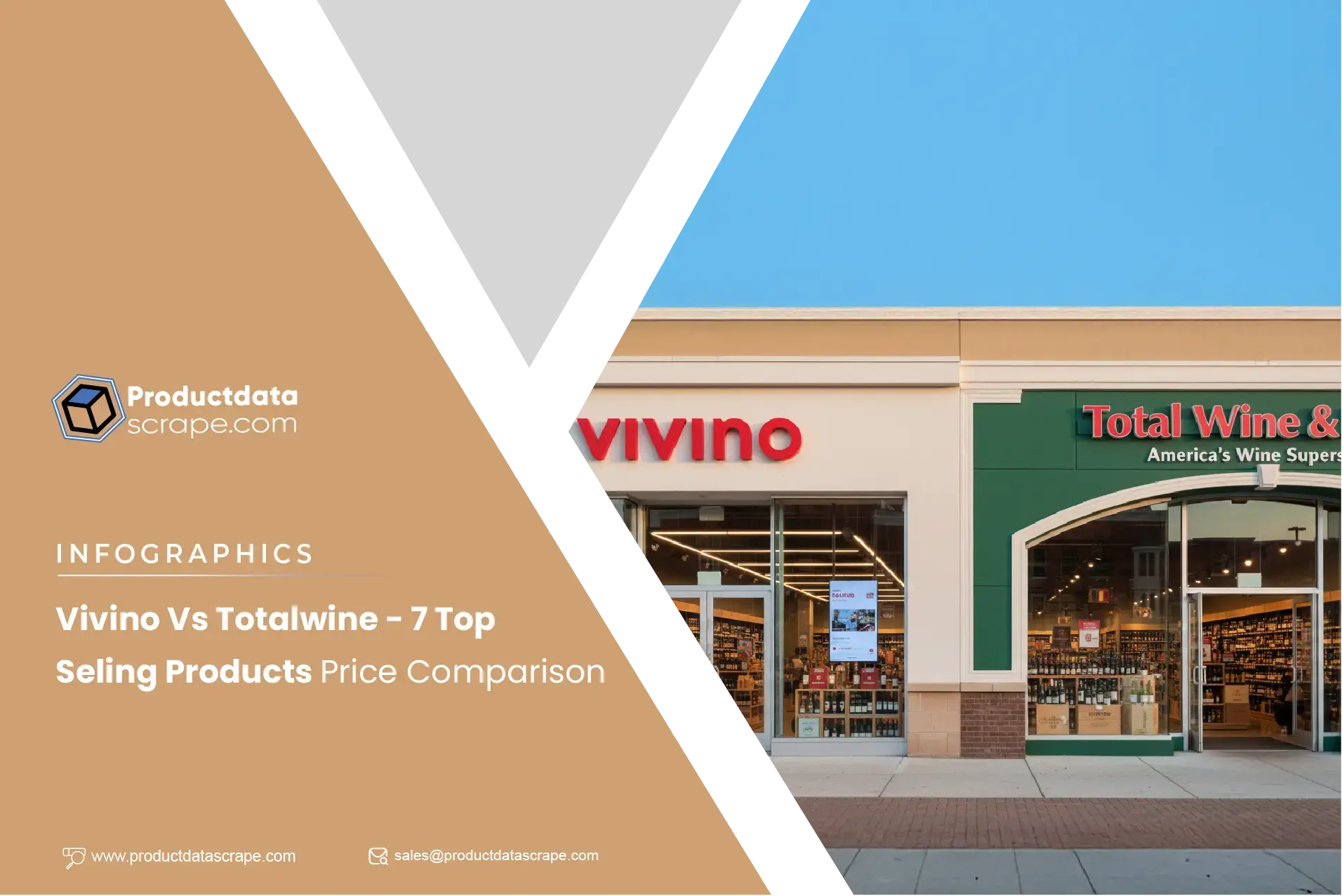Introduction
In today's highly competitive e-commerce landscape, businesses must stay agile
and informed to remain relevant. One of the most effective ways to achieve this is to Scrape
Daily Price Updates from Online Retailers. By collecting real-time pricing data, companies can
monitor competitors, respond quickly to market changes, and adjust their pricing strategies
accordingly.
Daily price scraping offers critical insights that drive more intelligent business decisions.
Through Web Scraping Average Price Changes on Online Stores, retailers can analyze pricing
trends, spot seasonal shifts, and understand how competitors position their products. This
allows them to optimize their prices to stay attractive without sacrificing margins.
Additionally, the ability to Track Retailer Price Changes with Web Scraping gives businesses a
strategic edge. Whether launching a new product or planning a promotional campaign, having
up-to-date pricing data ensures they remain competitive while delivering better customer value.
This blog will explore how daily price scraping transforms e-commerce
strategy—helping businesses boost profitability, improve pricing accuracy, and thrive in an
ever-evolving digital marketplace.
Why Daily Price Scraping Matters?
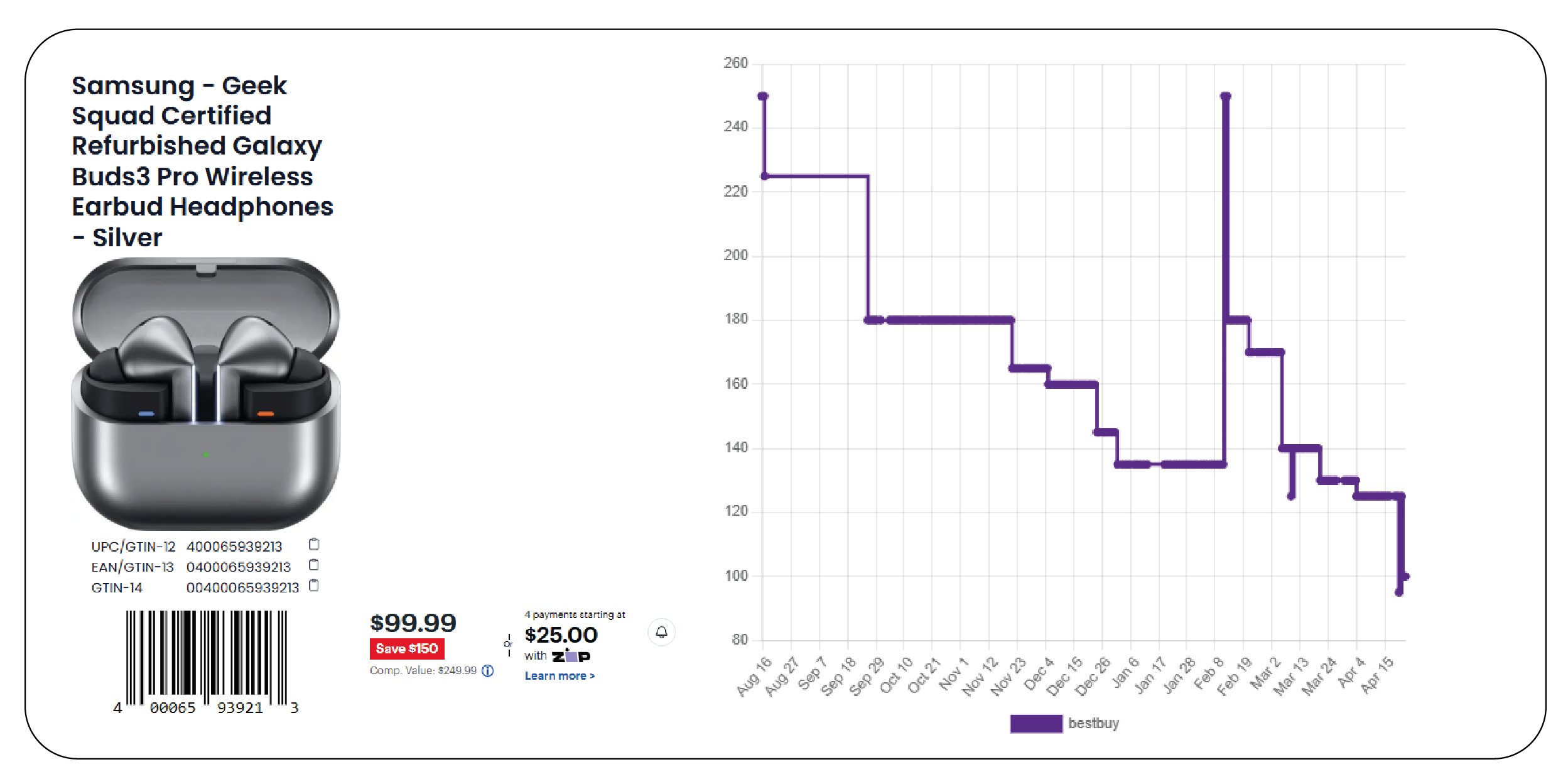
Price scraping involves extracting pricing information from online retail
platforms using automated tools or scripts. Unlike periodic manual checks, Web Scraping Daily Product Price Updates Data provides continuous information, enabling businesses to respond
swiftly to market changes. Here's why it's a game-changer:
- Dynamic Market Adaptation: Online retail prices fluctuate frequently due to
promotions, demand shifts, or competitor strategies. Daily scraping ensures businesses stay
updated with these changes.
- Competitive Edge: Monitoring competitors' prices allows retailers to adjust
their pricing strategies to remain attractive to customers without sacrificing margins.
- Data-Driven Decisions: Access to fresh pricing data supports strategic
decisions, from inventory management to marketing campaigns. Businesses can Extract Price
Change Frequency From ECommerce Sites to understand how often and why prices shift.
- Customer Trust: Offering competitive prices builds customer loyalty and
enhances brand reputation in a price-sensitive market.
With Web Scraping For Average Price Fluctuations Data, companies can gain deeper insights into
pricing patterns, enabling smarter, faster decisions. By integrating daily price scraping into
their operations, businesses can transform raw data into actionable insights, ensuring they
remain agile and customer-focused.
Key Applications of Daily Price Scraping
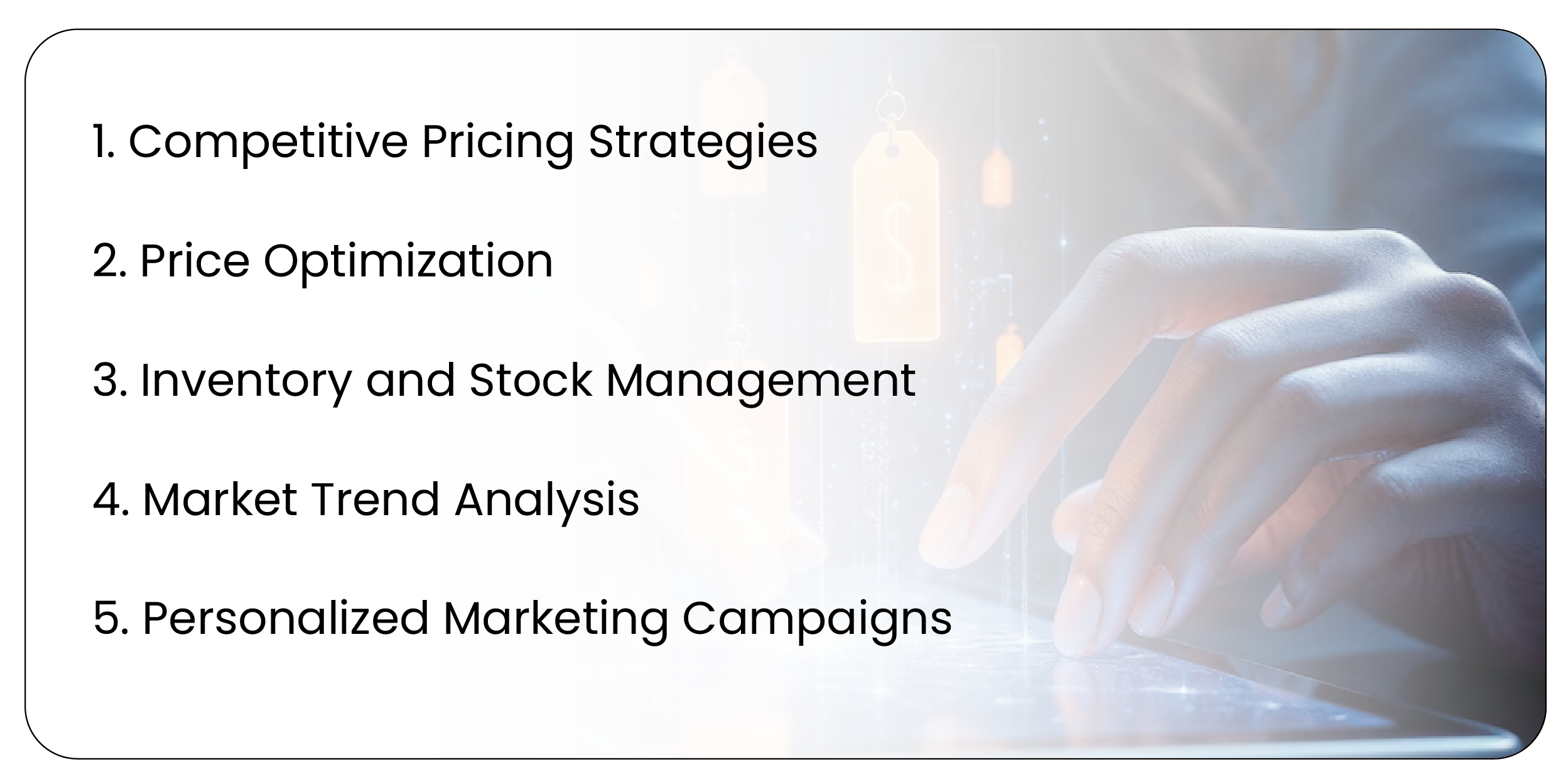
Daily price scraping is a versatile tool with applications across various aspects of online
retail. Below are some of the most impactful ways businesses leverage this practice:
1. Competitive Pricing Strategies
Staying competitive in e-commerce requires a deep understanding of how rivals price their
products. Daily price scraping enables businesses to:
- Track competitors' pricing trends for similar products.
- Identify promotional offers or discounts that may influence customer behavior.
- Adjust prices in real-time to match or beat competitors while maintaining profitability.
- Analyze pricing patterns to predict future moves by competitors.
For example, an electronics retailer can use scraped data to ensure their smartphones are priced
competitively against major players like Amazon or Best Buy, capturing price-sensitive
customers.
2. Price Optimization
Finding the sweet spot for pricing—balancing profitability and customer appeal—is a constant
challenge. Daily price scraping supports price optimization by:
- Providing insights into market price ranges for specific product categories.
- Highlighting opportunities to increase margins on high-demand items.
- Identifying underpriced products that could be adjusted for better revenue.
- Supporting A/B testing of pricing strategies to determine what resonates with customers.
Retailers can use these insights to fine-tune their pricing models, ensuring they maximize
revenue while remaining attractive to shoppers.
3. Inventory and Stock Management
Pricing data often correlates with demand and availability. By scraping prices daily, businesses
can:
- Detect sudden price drops that may indicate competitors' overstock or clearance sales.
- Adjust inventory levels to avoid stockouts or excess inventory.
- Prioritize fast-moving products based on pricing trends.
- Forecast demand for seasonal or trending items.
For instance, a fashion retailer might notice a competitor slashing prices on winter coats,
signaling a potential shift in demand, allowing them to adjust their stock accordingly.
4. Market Trend Analysis
Daily price scraping provides a window into broader market trends, helping businesses anticipate
shifts and plan strategically. Key benefits include:
- Identifying seasonal pricing patterns, such as holiday sales or back-to-school promotions.
- Tracking price volatility in specific product categories, like electronics or home goods.
- Understanding consumer behavior based on how prices influence purchasing decisions.
- Spotting emerging products gaining traction through competitive pricing.
These insights enable retailers to align their strategies with market dynamics, ensuring they
capitalize on opportunities and mitigate risks.
5. Personalized Marketing Campaigns
Pricing data can inform targeted marketing efforts, enhancing customer engagement. Daily scraping
supports this by:
- Identifying price points that resonate with specific customer segments.
- Highlighting opportunities for limited-time offers or flash sales.
- Enabling dynamic pricing in email campaigns or personalized promotions.
- Supporting loyalty programs with competitive pricing incentives
For example, a retailer could use scraped data to offer exclusive discounts on products a
customer has browsed, increasing conversion rates.
Tools and Technologies for Effective Price Scraping
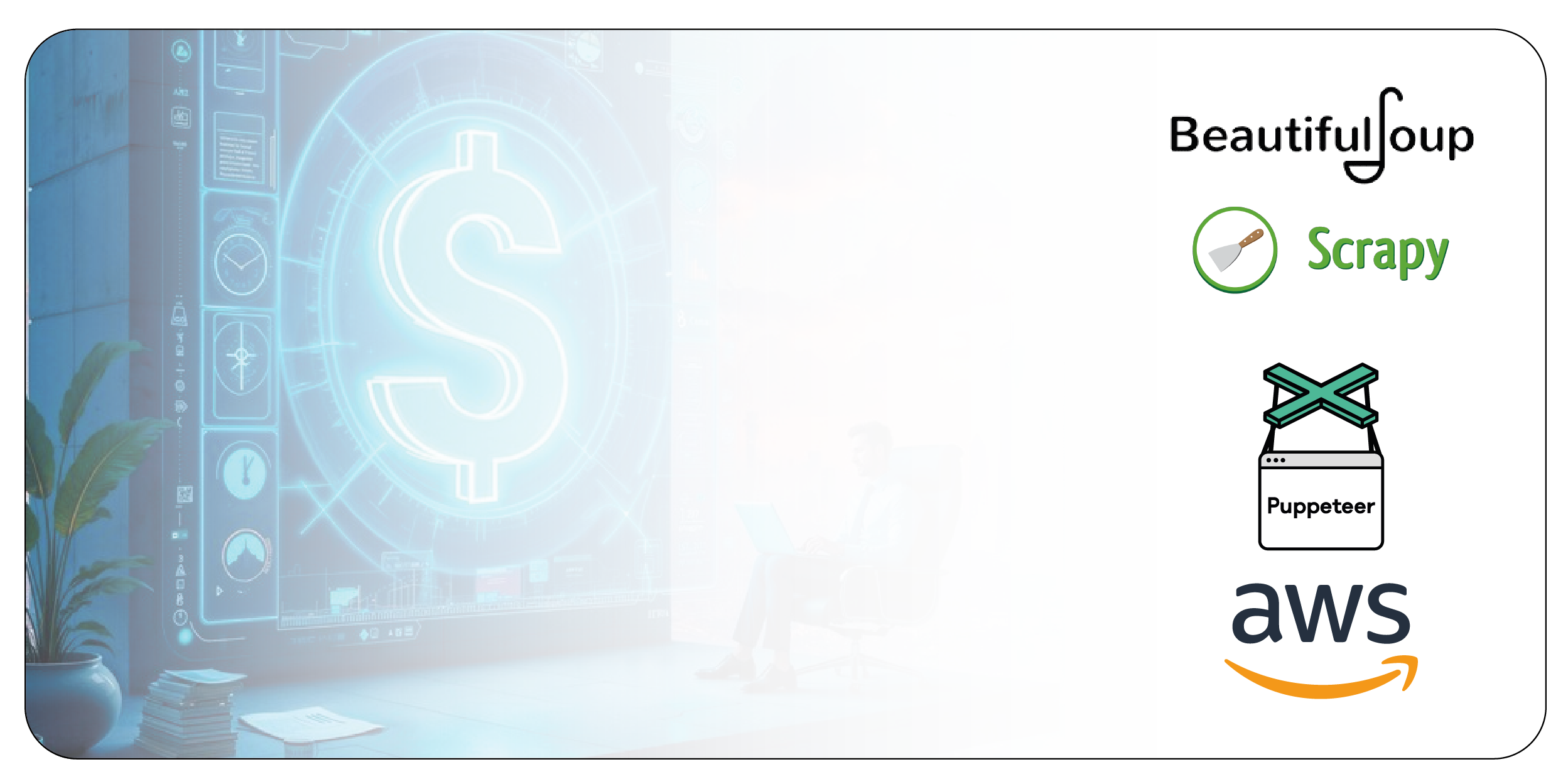
Businesses rely on a combination of tools and technologies designed for automation, scalability,
and accuracy to scrape prices effectively. Here are some popular options:
- Web Scraping Frameworks:
- BeautifulSoup (Python): Ideal for parsing HTML and extracting
pricing data from static websites.
- Scrapy: A robust framework for large-scale scraping projects with
built-in support for handling complex websites.
- Puppeteer: A Node.js library for scraping dynamic, JavaScript-heavy
websites by controlling headless browsers.
- Cloud-Based Solutions:
- AWS Lambda: Serverless computing for running scraping scripts at
scale.
- Google Cloud Functions: Cost-effective for scheduling daily
scraping tasks.
- Azure Data Factory: Integrates scraping with data processing
pipelines.
- Data Storage and Analysis:
- PostgreSQL/MySQL: This stores large volumes of pricing data.
- MongoDB: Suitable for handling unstructured or semi-structured
data.
- Tableau/Power BI: This is used to visualize pricing trends and
generate insights.
Businesses can streamline their scraping processes and ensure reliable data collection by
selecting the right combination of tools.
Boost your e-commerce strategy with real-time data
scraping for better insights!
Contact Us Today!
Best Practices for Daily Price Scraping
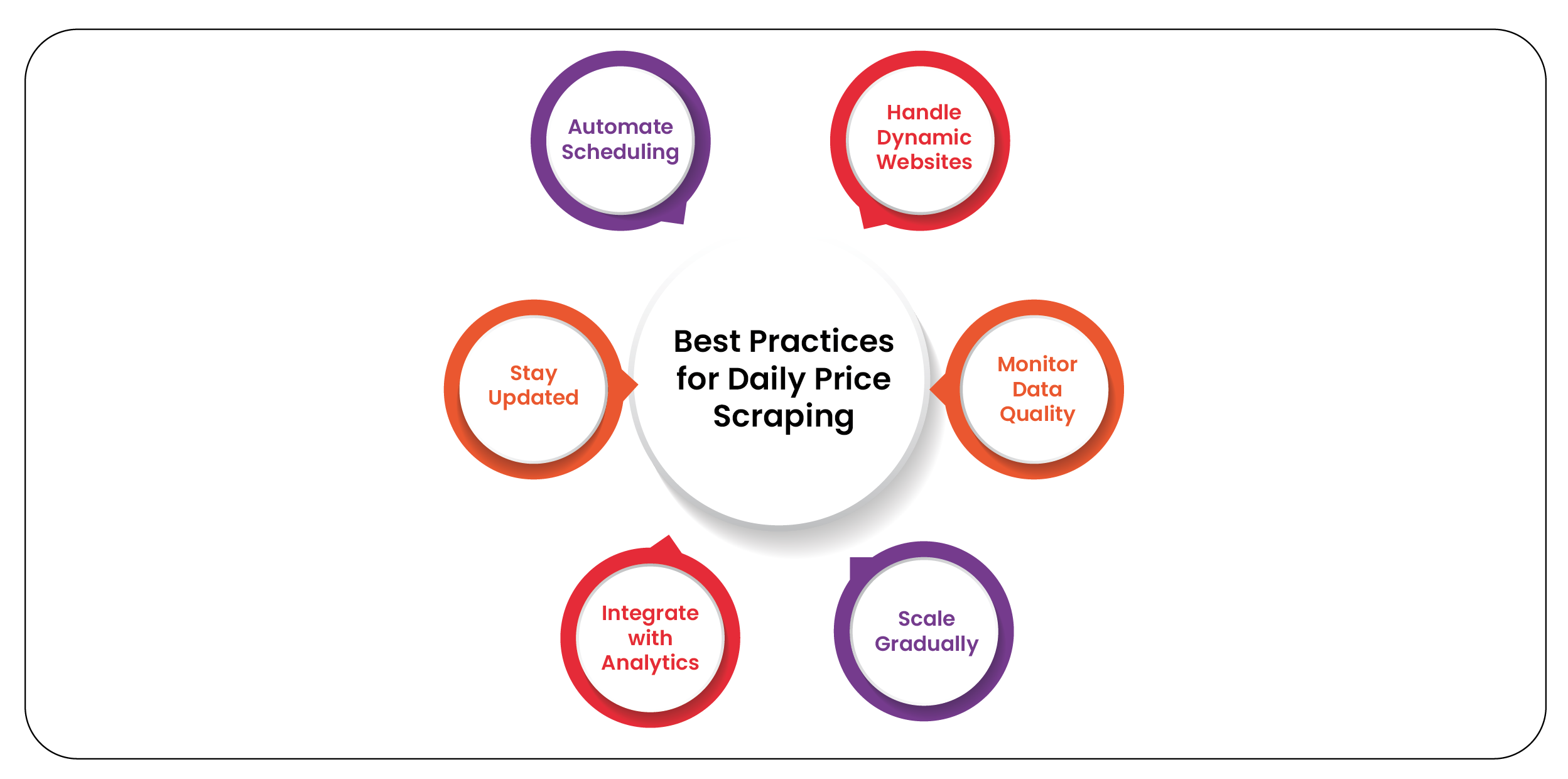
To maximize the benefits of daily price scraping, businesses should adopt best practices that
ensure efficiency and compliance. Here are some recommendations:
- Automate Scheduling: Use cron jobs or cloud schedulers to run scraping
scripts daily at optimal times, such as during low-traffic periods.
- Handle Dynamic Websites: Employ headless browsers or APIs to scrape
JavaScript-rendered pages, ensuring accurate data extraction.
- Monitor Data Quality: Implement validation checks to detect incomplete or
inaccurate data, such as missing prices or incorrect formats.
- Scale Gradually: Start with a small set of products or retailers and expand
as scraping processes stabilize.
- Integrate with Analytics: Feed scraped data into analytics platforms to
generate real-time dashboards and reports.
- Stay Updated: Regularly update scraping scripts to adapt to website
changes, such as new layouts or anti-scraping measures.
These practices help businesses maintain a robust and efficient scraping operation, delivering
consistent value.
Real-World Success Stories
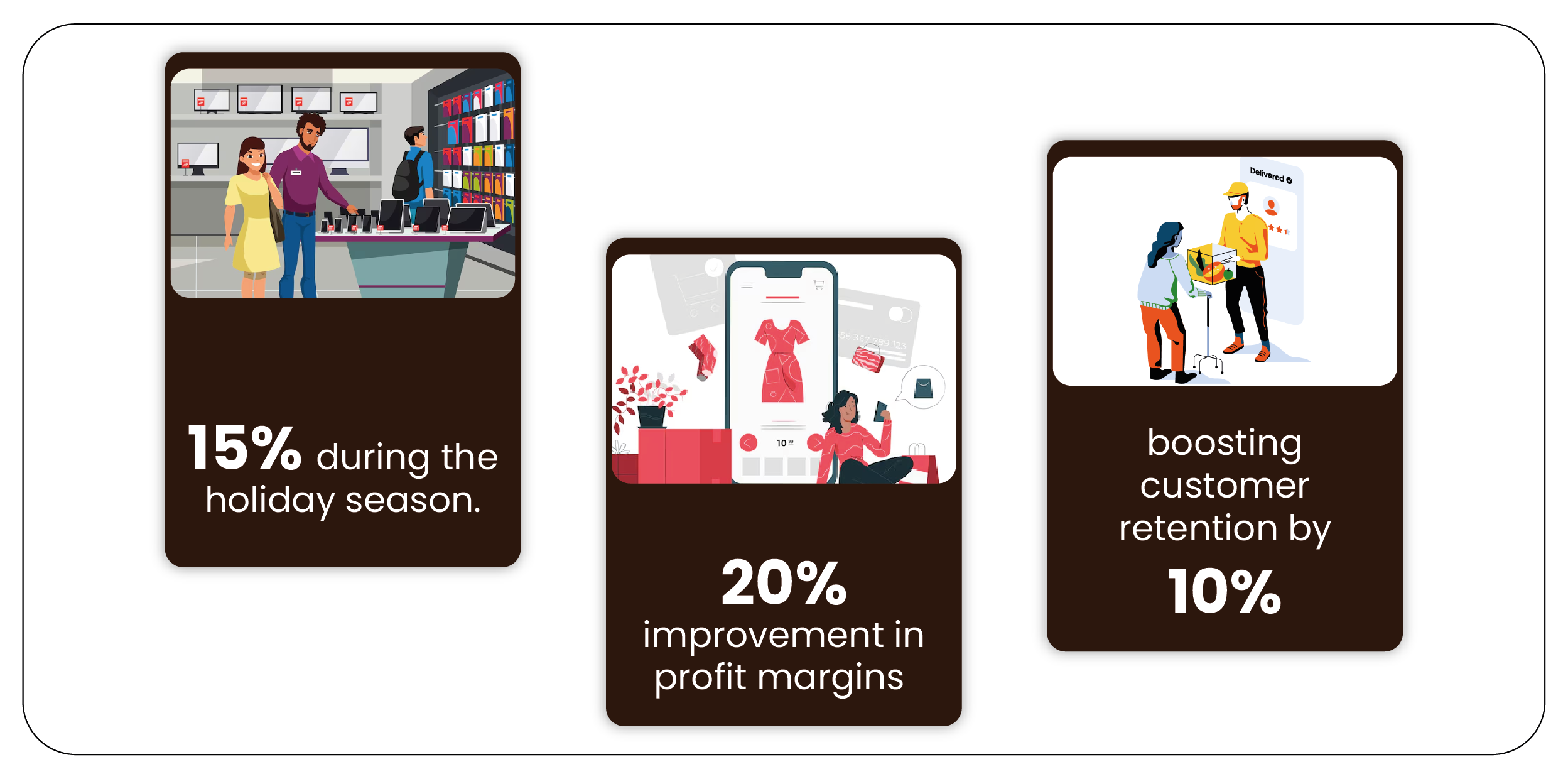
Daily price scraping has powered success for retailers across industries. Here are a few
examples:
- Global Electronics Retailer: A leading electronics chain used daily price
scraping to monitor competitors' prices for TVs and laptops. Adjusting prices in real-time
increased sales by 15% during the holiday season.
- Fashion E-Commerce Platform: An online fashion retailer leveraged scraped
data to optimize pricing for seasonal collections. This led to a 20% improvement in profit
margins while maintaining competitive prices.
- Grocery Delivery Service: A grocery delivery startup used price scraping to
track competitors' prices for staples like milk and bread. This enabled them to offer
competitive bundles, boosting customer retention by 10%.
These success stories highlight the tangible impact of daily price scraping on revenue, customer
satisfaction, and market positioning.
The Future of Price Scraping in E-Commerce
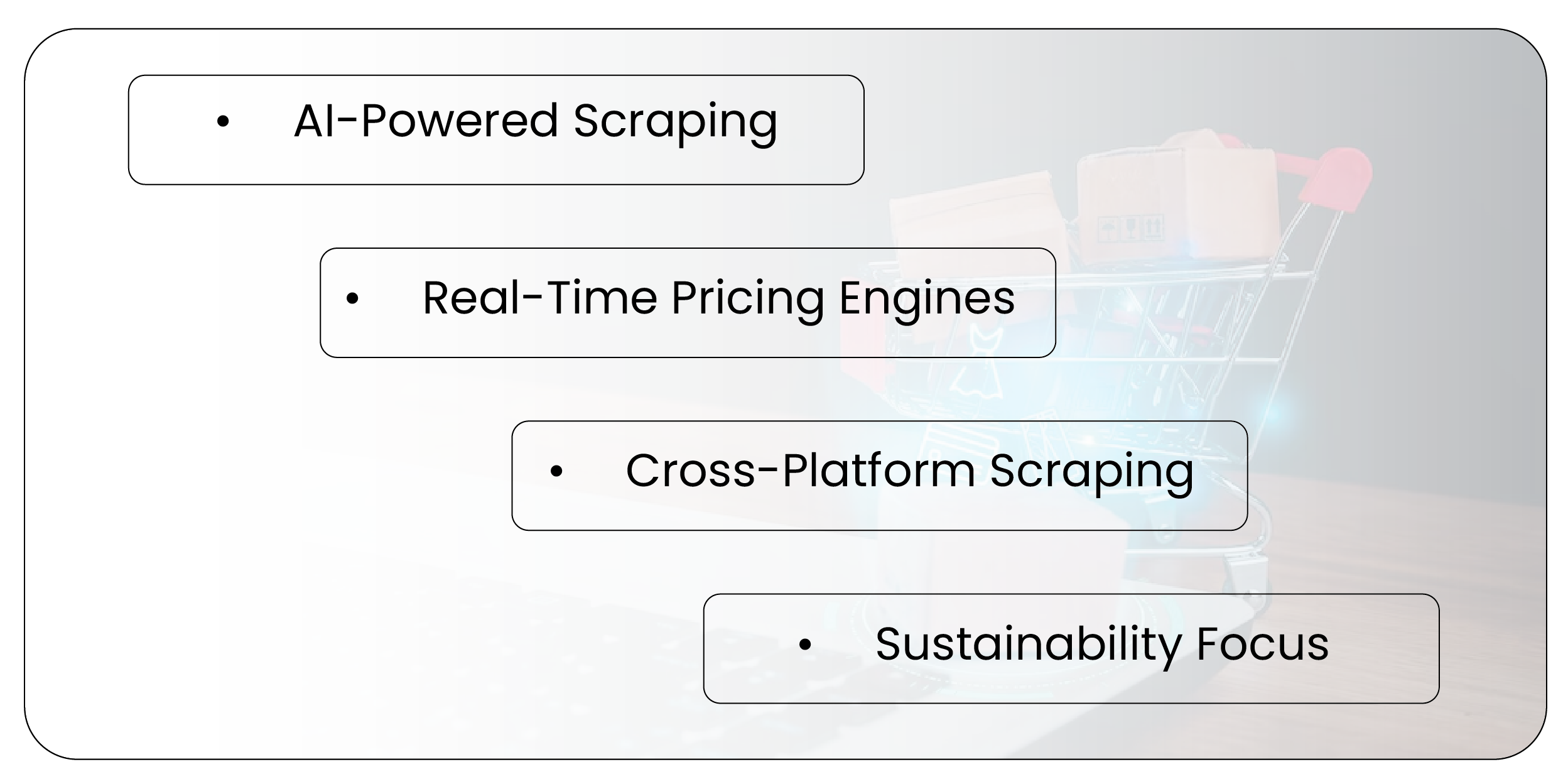
As e-commerce continues to evolve, Web Scraping E-commerce Websites will play an increasingly
critical role in shaping competitive strategies. Emerging trends influencing the future of daily
price scraping include:
- AI-Powered Scraping: Machine learning algorithms will enhance data
extraction accuracy and predict pricing trends more precisely.
- Real-Time Pricing Engines: Integration with AI-driven pricing systems will
enable instant price adjustments based on scraped data.
- Cross-Platform Scraping: Businesses will gather pricing information from
websites, mobile apps, and social media marketplaces.
- Sustainability Focus: Retailers will use pricing insights to optimize
supply chains, reduce overstocking, minimize waste, and support eco-conscious initiatives.
Moreover, the availability of comprehensive datasets, such as an Ecommerce Product & Review
Dataset , will enrich pricing intelligence by combining product performance insights with
customer feedback. By embracing these technological advancements, businesses can unlock new
opportunities to innovate, adapt, and lead in the ever-competitive e-commerce environment.
How Product Data Scrape Can Help You?
- Customized Data Extraction Solutions: We build tailored scraping tools to
collect specific retail data such as product prices, availability, ratings, and promotions
from e-commerce websites, mobile apps, and marketplaces.
- Real-Time & Scheduled Scraping: Our systems support real-time and scheduled
scraping, ensuring you receive up-to-date data at the frequency you need—daily, hourly, or
weekly.
- Multi-Platform Retail Coverage: We can extract data from multiple
platforms, including websites, social media shops, and apps, providing a complete view of
the retail landscape across various channels.
- Clean, Structured, and Scalable Datasets: We deliver data in clean,
structured formats (CSV, JSON, Excel, etc.) that are easy to integrate into your systems for
analytics, dashboards, or machine learning models.
- Compliance-First Approach: We follow ethical web scraping practices and
stay updated with platform policies and regional data compliance laws to ensure safe and
responsible data collection.
Conclusion
Daily price scraping is a powerful tool for online retailers seeking to navigate the complexities
of the digital marketplace. Its applications are vast and impactful, from competitive pricing to
inventory management and personalized marketing. With the support of Ecommerce Data Scraping
Services, businesses can automate and streamline the collection of valuable pricing
intelligence. By leveraging the right tools, adopting best practices, and staying attuned to
market trends, companies can Extract Popular E-Commerce Website Data efficiently and
consistently. This enables timely reactions to competitor moves and fuels data-driven strategies
across departments. In today's data-driven environment, the ability to Extract E-commerce Data
regularly empowers retailers to make smarter decisions, enhance customer satisfaction, and
secure a long-term competitive edge. In an era where data is king, daily price scraping remains
an essential asset for any e-commerce player aiming to thrive in an ever-evolving digital world.
At Product Data Scrape, we strongly emphasize ethical practices across all our services,
including Competitor Price Monitoring and Mobile App Data Scraping. Our commitment to
transparency and integrity is at the heart of everything we do. With a global presence and a
focus on personalized solutions, we aim to exceed client expectations and drive success in data
analytics. Our dedication to ethical principles ensures that our operations are both responsible
and effective.

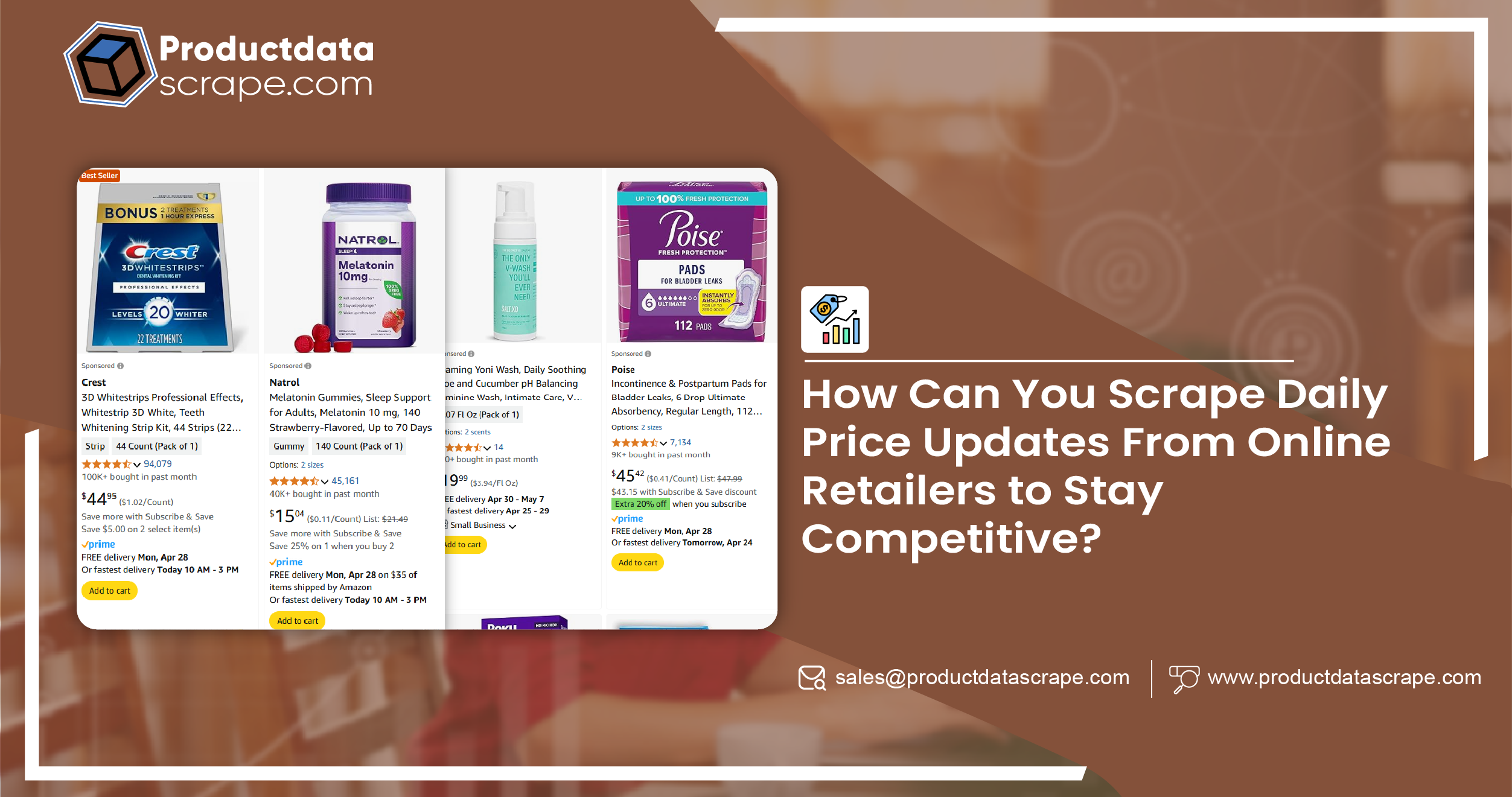






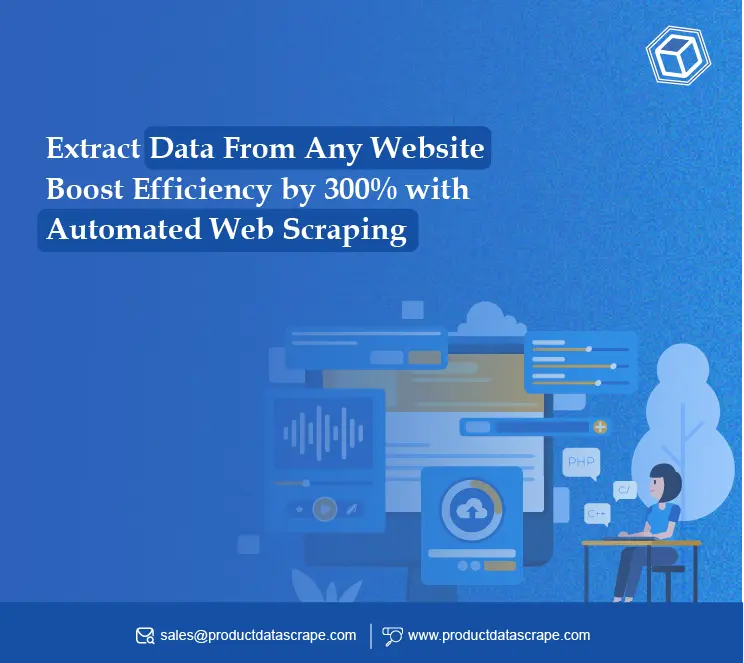



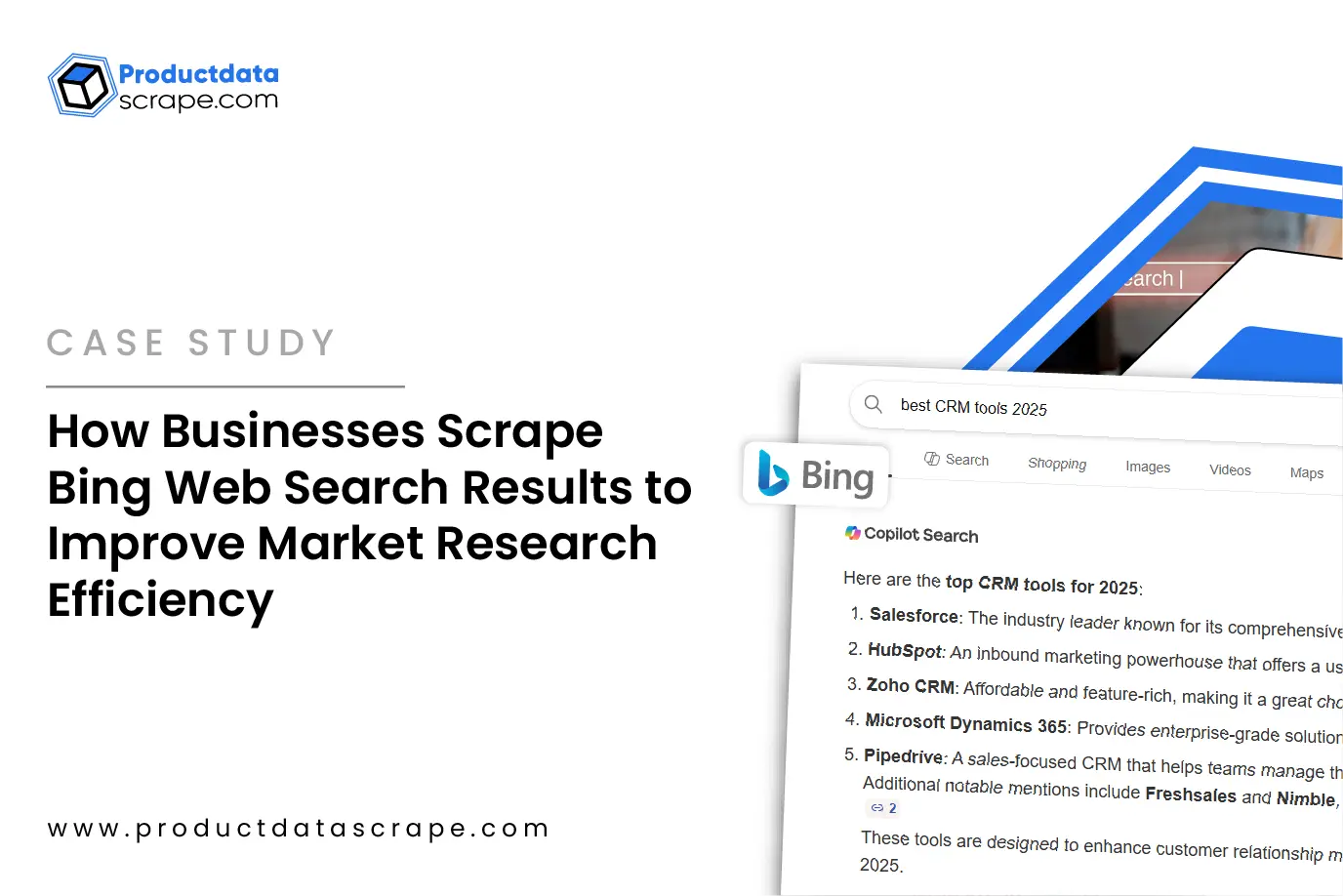










.webp)
-01.webp)
.webp)
